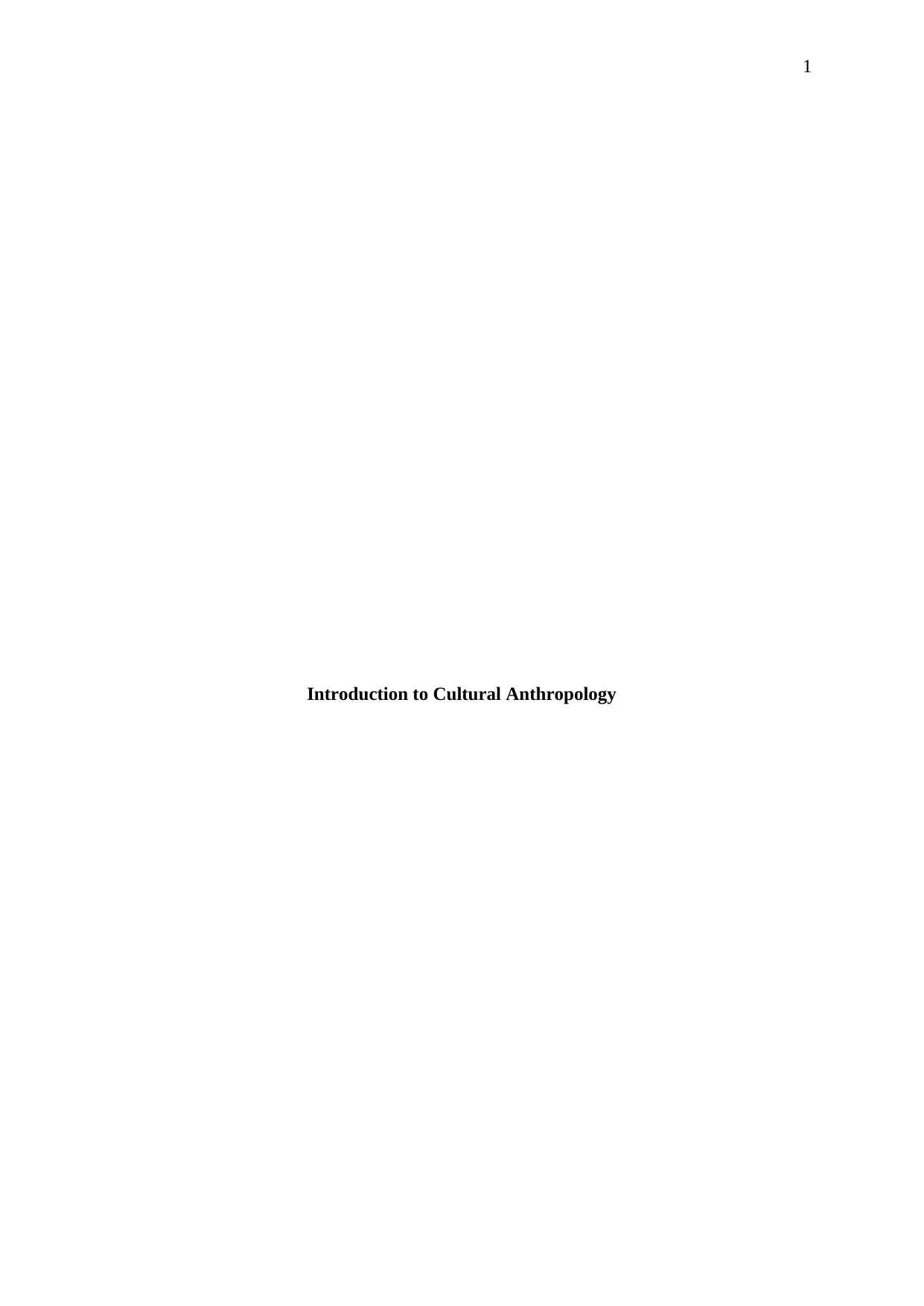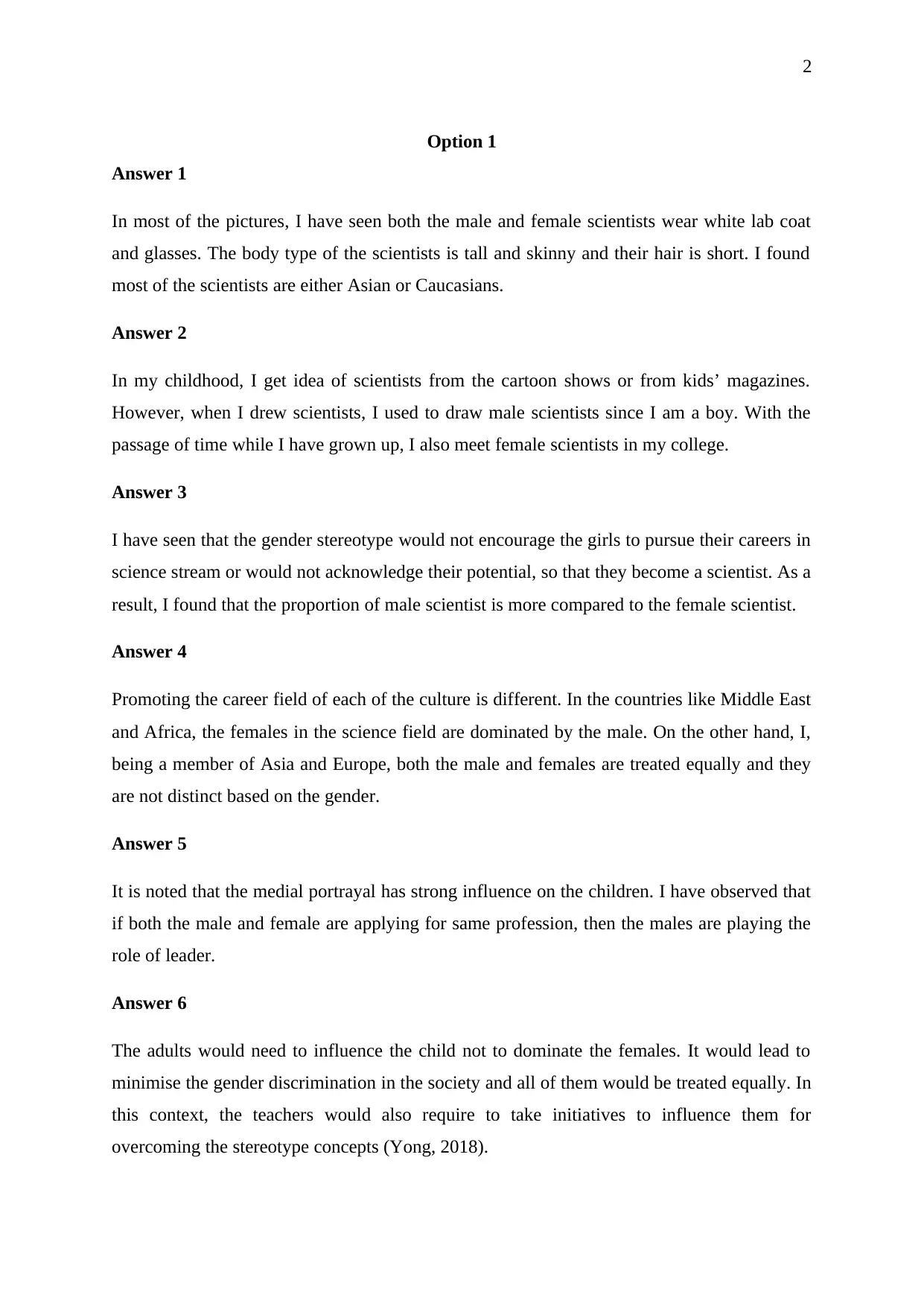Cultural Anthropology: Analyzing Gender Roles and Science Careers
VerifiedAdded on 2023/04/25
|3
|393
|313
Essay
AI Summary
This essay provides an introduction to cultural anthropology by exploring gender stereotypes in science. It examines the common portrayals of scientists, reflecting on personal perceptions developed during childhood and how media influences these views. The essay discusses the impact of gender stereotypes on girls' pursuit of science careers, noting the disproportionate representation of male scientists. It also contrasts cultural differences in promoting science careers, highlighting gender equality in Asia and Europe versus male dominance in the Middle East and Africa. The essay further emphasizes the role of media in perpetuating gender stereotypes and suggests that adults and teachers should actively counter these biases to foster equality. The author references studies on the underperformance of girls in science and the influence of media portrayals on children's perceptions, advocating for a more equitable and inclusive approach to science education and career opportunities. Desklib provides a platform for students to access this essay and other study resources.
1 out of 3









![[object Object]](/_next/static/media/star-bottom.7253800d.svg)